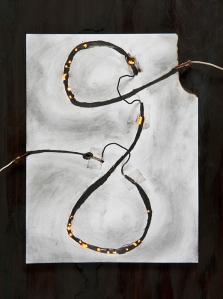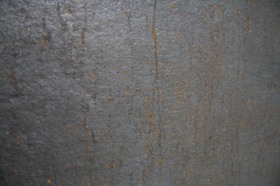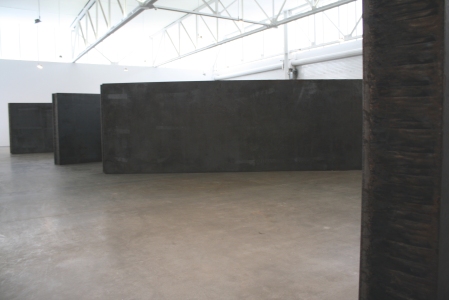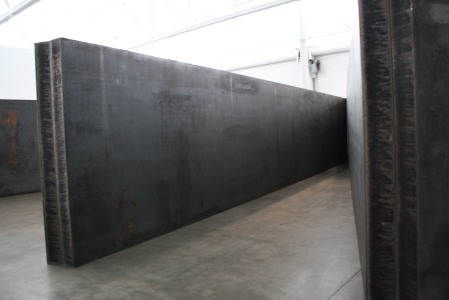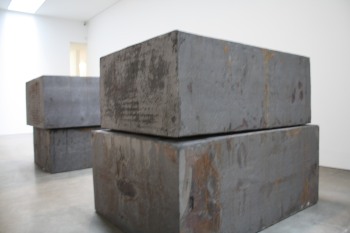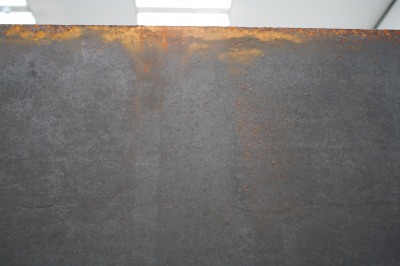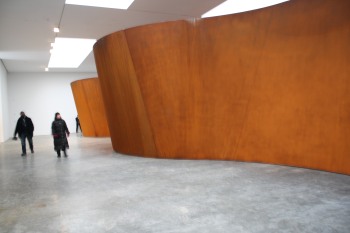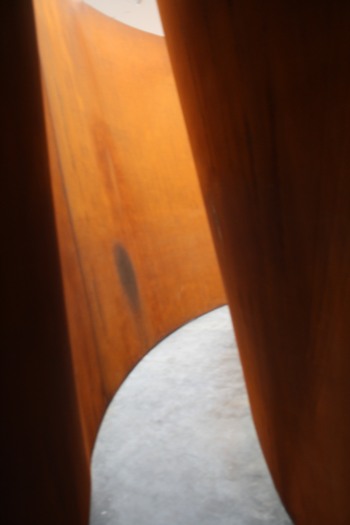David Goldes newest series of photographs captures the sublime energy of electricity, the invisible yet ubiquitous cornerstone of contemporary life. Using graphite, conductive paint, water and even glass, Goldes manipulates electricity to make visible the unseen current.
The artist’s newest work, on display at Yossi Milo Gallery through March 15th, is grouped into two categories: recreations of early electrical experiments from by pioneer scientists like Michael Faraday and Humphry Davy form the series Electricity Pictures and the series Electro-graphs, which depicts complete electrical circuits made from graphite which are then charged with a high-voltage battery, resulting in sparks of light. The artist’s original graphite drawings are also on view.
Goldes is a rare type of artist, someone whose practice is interdisciplinary. He uses photography as a tool to capture and record his electrical experiments. This unique point of view developed from the artist’s early carrier as a scientist. He received a B.A in Biology and Chemistry from SUNY Buffalo, a M.A. in Molecular Genetics from Harvard University and received an M.F.A. in photography from SUNY Buffalo. Goldes currently teaches at the Minneapolis College of Art and Design.
The role of teacher informs Goldes’ photography. Learning about his work is like taking an elementary science class, challenging the viewer’s scientific knowledge. The artist constructs his experiments by cobbling together household objects into elaborate electrical circuits. Mixing high-voltage and water is something no one is supposed to do, but Goldes’ doesn’t shy away from dangerous situations. In his laboratory, or studio, Goldes’ pushes the boundaries by controlling the element, forcing it to arch across wires, course through water and jump from glass to glass He even created his own Faraday Transformer, which changes electromagnetic currents into electricity (as see on the left)
To the untrained mind, electrical current can seem like magic and each picture tells a story.
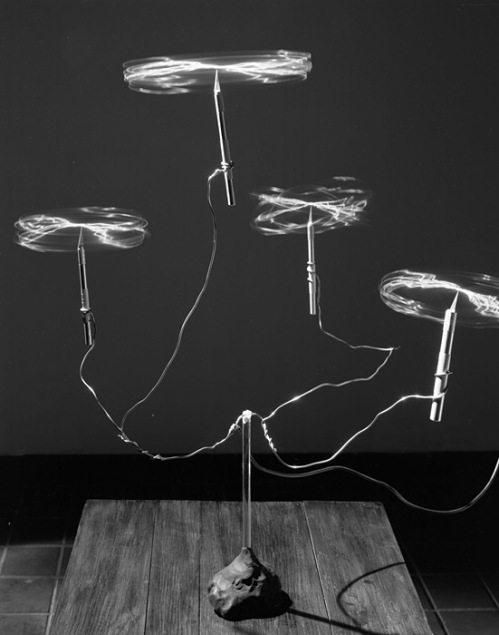
From the series Electricity Pictures, Charged Wires Spinning and Balancing on Exacto Knives, 2012, Gelatin Silver Print
Charged Wires Spinning and Balancing on Exacto Knives is a particularly complicated picture. Goldes attaches wire to a glass rod that is held in place by clay stuck to a wooden table. (this table, Goldes explains, has been replaced throughout the years after it becomes too singed from electrical experiments gone awry). The sturdy wires hold in place the exacto knives. Spinning fans, or two pieces of “z” shaped wire soldered together and punctured in the middle, balance on the tip of the exacto knife. The glass pole is charged and electricity surging through the wire and exacto knives cause the fans to spin rapidly, a result that shocked Goldes. The resulting Gelatin Silver Print, taken with a 4 X 5 camera is minimalist and mysterious. Goldes work remind me of a mad scientist’s laboratory and of arte povera movement in which artist’s made art cheap, easy to find materials.
Jacob’s ladder is another highlight of the exhibition and is an example of Goldes color photography. This long exposure, with a digital camera, captures electricity arching between two sheets of paper. The edges of the paper are covered with conductive paint, a material sold at radio shack that a student discovered and recommended to Goldes. A single line of conductive paint is drawn from one edge of the paper to the other at the bottom of the sheet. Wires are connected to the paper with clamps and charged with a high-voltage battery. When the power is switched on, the electricity arches back and forth between each piece of paper, slowly working its way up to the top. With a long exposure, Goldes is able to capture the entire process. The resulting Archival Pigment Print is a awe-inspiring construct that captures the culmination of the experiment.
But, Goldes’ Electro-graphs steal the show. Goldes first discovered the conductive properties of graphite after reading a single sentence in an old science textbook. The sentence stated that graphite might be conductive, sparking Golde’s imagination. Using a typical No. 2 yellow pencil, he drew a simple circuit and hooked it up to a high-voltage battery. To his surprise, it worked. To make the current visible, Goldes introduces small cuts and erasures into the graphite causing the electricity to jump across the gaps. The artist captures the moment when the drawing is charged, creating a dramatic and beautiful photograph. The original drawings, blackened from the sparking electricity and with wires still attached, are also on display and are sculptural in quality. These one-of-a-kind pieces are beautiful and give the viewer greater insight into Goldes’ process.
Goldes’ work is singular. His photographs explore the point of intersection between art and science, simplicity and complexity, documentation and fine art. He works without regard to photographic trends. As an artist, he acknowledges the beauty of science and the influence of electricity – the driving force of everyday life in the digital age. As we become more dependent on our smart phones, Ipads and the internet, we rely even more on the power of electricity to run those gadgets – a resource we take for granted – until the power is shut off. During superstorm Sandy, electricity and where to find it became the ultimate search. The city was divided in half, those with power and those without. People crowded into Starbucks and public libraries above 42nd street for a 15 min of charge and the chance to communicate with their loved ones. Without electricity people were forced back to 19th century life, lighting fires in their homes, reading by candle light, playing board games and living life not by the hours of a clock, but by sunrise and sunset. Just as Edward Burtynsky stresses the importance of water, Goldes champions electricity. For without electricity where would we be?
All images (c) David Goldes, Courtesy Yossi Milo Gallery, New York





